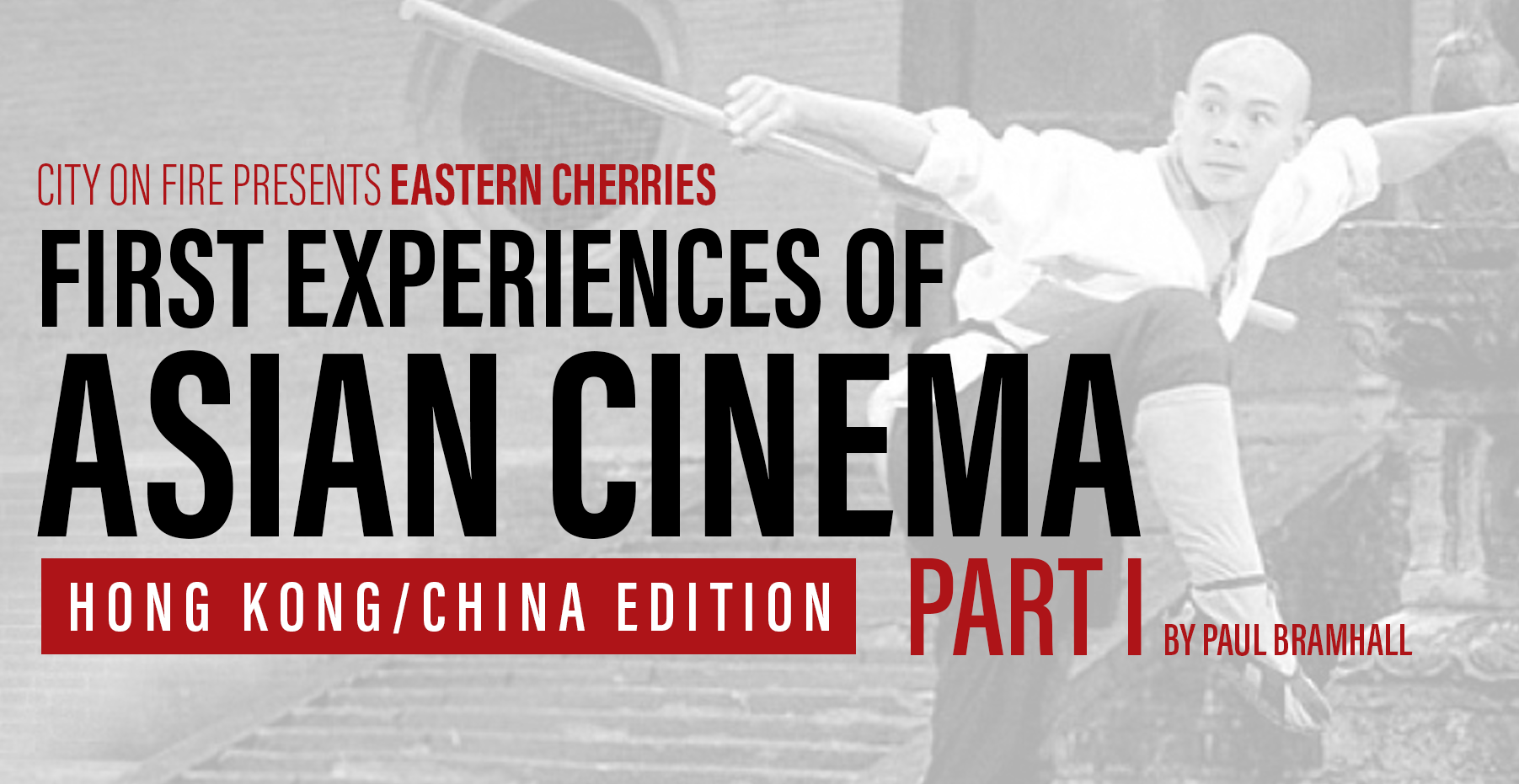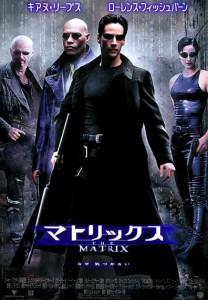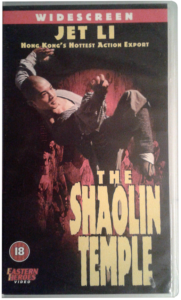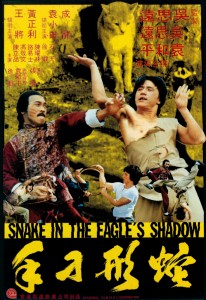 Over the coming months, myself and other regular contributors here at cityonfire will be weighing in with what movie it was that first got us into Asian cinema. We’ll be breaking it down into 3 regions – Hong Kong/China, Japan, and Korea – in that order, with a month dedicated to each. First out of the gates, as expected, is Hong Kong and China. Most likely the gateway for many a COF reader to be exposed to the jade screen, the regions martial arts flicks of the 70’s flooded cinemas across the world, creating many a lifelong fan along the way.
Over the coming months, myself and other regular contributors here at cityonfire will be weighing in with what movie it was that first got us into Asian cinema. We’ll be breaking it down into 3 regions – Hong Kong/China, Japan, and Korea – in that order, with a month dedicated to each. First out of the gates, as expected, is Hong Kong and China. Most likely the gateway for many a COF reader to be exposed to the jade screen, the regions martial arts flicks of the 70’s flooded cinemas across the world, creating many a lifelong fan along the way.
My own story doesn’t go back quite that far, not least because I was still nothing more than a twinkle in my parent’s eye. Rather, it begins when I was still a (relatively) innocent 18 year old back in 1999. I’d been a film buff for a number of years already, enthusiastically spending whatever money I earned from a paper round or mowing the lawn on the latest VHS releases. When more movies started to be released than I could afford, I’d simply mow the lawn again, regardless of if it’d only been cut a couple of days prior, demanding the heavily negotiated fee of £5 from my Dad.
As a 16 year old I would spend my Saturdays going into the city centre of my hometown Liverpool, and excitedly peruse the shelves of the local HMV and Virgin Megastore. Back then, unlike many of my peers, the chances of me being passed off for someone who was 18 were slim to none. So it was such visits would also involve targeting another customer in the store who, to my eyes at least, looked both over 18 and trustworthy, which would be followed by the inevitable awkward approach to ask them if they’d mind buying an 18-rated movie for me if I gave them the money. I still remember doing this with the newly released widescreen version of Taxi Driver, to which my unassuming purchasing agent gave an agreeable nod of approval.
Such purchases were mostly met with bewilderment from my parents, not least because of my insistence on purchasing the widescreen versions of whatever title I was seeking. As the movie started after an endless number of trailers, I’d always be greeted by their frowned expressions as to why there were “huge black bars covering half the screen” of our cumbersome 4:3 television set. To suddenly find myself gainfully employed with a fulltime job, it felt amazing to readily have the money to purchase the latest movies, and there was even funds leftover to hit the cinema! It was during that fateful year of 1999 that one such cinema visit would set me on the road to discovering the world of kung-fu goodness, when my friend and I hit the local Odeon to watch a movie called The Matrix.
The combination of Yuen Woo-Ping choreographed action, bullet time, and gravity defying spectacle left my jaw on the floor, and as we left the cinema it was agreed that we needed to seek out more kung fu action. Whether it was a coincidence or not is still a question I’m unable to answer, but around that same time a documentary (the name of which escapes me) was shown late night on Channel 4, about the Shaolin Temple in China. I distinctly remember a part of the documentary that talked about a movie which was filmed there in 1982 – ironically called The Shaolin Temple. The narrator calmly explained how the movie became famous for kickstarting a wave of wushu mania in the Mainland, who until that point had mostly been subjected to endlessly bland Communist propaganda.
More than the narration though, what remained lodged in my brain were the clips that played over it from the movie itself. Bodies flew through the air at each other from opposite directions, clashing against the backdrop of the sky, monks spun themselves up from horizontal positions to land on their feet, and a mass battle played out onscreen with everyone armed with every weapon imaginable. Despite not having any of the special effects or budget of The Matrix, I found myself sat there feeling that same sense of amazement that I had in the cinema, and knew it was a movie that I needed to track down.
As it happened, the expectation of tracking down what must surely be such an obscure title turned out to be a completely unfounded one. Shortly afterwards myself and a couple of friends found ourselves in the local Blockbuster Video, a store we’d haunt at least once a week. The 3 of us all loved movies, but you could say we loved them in very different ways, so settling on a title (or 2) to rent for the night sometimes took longer than the actual movies themselves. I don’t remember what we ended up renting that particular time, but what I do remember is, on that small selection of shelves dedicated to VHS tapes you can actually buy, was not only The Shaolin Temple, but there was The Shaolin Temple 2….and 3! I bought them all the following day.
The composition of the VHS cover remains with me to this day – the image of a monk poised on one foot set against a red backdrop, with the title splashed in large yellow lettering, and the bold declaration written across the top “Jet Li – Hong Kong’s Hottest Action Export”. I guess that’s who the monk was. It was a bombastic name, and admittedly the only Jet I’d known until that point was the one I’d had a huge crush on from the UK version of Gladiators. Rated 18, there in the corner was the logo of the distributor – Eastern Heroes. Over the coming weeks my friend and I would watch the complete trilogy, but it was the original one that left the lasting impact. The sequence were Li goes through the seasons performing wushu routines, the scenes of the monks practicing on the lawn, and of course….Li in drag. I was hooked, and now close to 20 years later, I still am.
A lot happened in the 6 months that followed. The year 2000 introduced itself with none of the chaos many expected, I purchased some new-fangled piece of technology called a DVD player, and in February I picked up the debut release of a new DVD label called Hong Kong Legends, which went by the name of Snake in the Eagles Shadow. Jackie Chan’s breakthrough movie (which I confess to picking up not because it starred Jackie Chan, but because the sleeve declared it was choreographed by Yuen Woo-Ping of The Matrix fame) would become the first DVD in a collection which I’m now fearful to count. Perhaps most ironically of all though, was that Jet Li himself would become a household name, thanks to his leading man role alongside Aaliyah in Romeo Must Die.
I recently decided to re-watch The Shaolin Temple for the first time since discovering it, not really knowing what to expect having devoured literally 100s of Asian martial arts movies since it first served as an introduction to the genre. It still hit all the right notes, but to my surprise I found the action scenes to be slower than I remembered them. Perhaps this is because the only real comparison point I had back then was The Matrix, so the moves on display blew me away with relative ease (not that they’re anything to be sniffed at either way!) But it still impressed where it counts – Jet Li’s training through the seasons, Yu Cheng-Hui’s drunken sword demonstration, and the mass battle scenes all had what I can now describe as that distinctive 80’s Mainland wushu feel to them.
Ironically, out of all the DVD’s (and now Blu-ray’s) purchased since then, I never did replace the VHS that I bought. Somewhere along the way it got hauled to a charity store, back when I’d been living overseas for several years, and my parents asked me what they should do with all the tapes. I didn’t stop to think that The Shaolin Temple was amongst them, so the very movie that got me into the genre is one that I don’t own. One day I’ll get around to hunting down the Eastern Heroes DVD, that way I can still have the English dub and enjoy the unique case the initial Eastern Heroes DVD releases came in. So while many have Bruce Lee and Jackie Chan to thank for their introduction to Hong Kong and Chinese cinema, for me it was a young Jet Li. That probably also explains why I’m one of the few willing to forgive him for Badges of Fury. Forgive, and admittedly still trying to forget.
Read First Experiences of Asian Cinema: Hong Kong & China Edition Part II
Read First Experiences of Asian Cinema: Hong Kong & China Edition Part III
Read First Experiences of Asian Cinema: Hong Kong & China Edition Part IV







Nice topic Paul – it hits all the nostalgic notes in my old martial arts movies’s soul and I was hooked to that genre with Shaolin Temple, Hong Gil Dong (North Korean production), The Undaunted Wudang, Dark Shadows over the gorge, but my total drowning in the martial arts movies was done by Five Superfighters, which still is one of my favorite movies of all times. Then it came the Jackie Chan/Sammo Hung/Yuen Biao wave that swept me away completely.
Thanks for your comment Kiril! If any movie was going to get someone hooked on kung-fu cinema, ‘Five Superfighters’ would surely be it. Ironically, I reviewed ‘Hong Gil Dong’ in my pre-COF era for the Korea Film Festival in Australia blog back in 2013, you can check it out here.
Damn – that was one fine read to be honest, I was amazed of the story behind the curtain of North Korea’s only attempt in kung fu universe, poor director and his wife… Sadly the movie hasn’t aged well, saw it few years ago and it was borderline boring and cringy in performance area. It was quite popular in my native Bulgaria that’s for sure – it was given a double bill with Shaolin Temple in one of the local cinemas in my town and me and my friends were eager to see them again and again.
Back in ’84 it was quite difficult for ant movie apart from former Soviet Union, to hit screens, so it was simply amazing when I saw for the first time Raiders of the lost Ark, Star Wars ans Willow…
But my childhood was ruled by martial arts movies – it was nearly impossible to get your hands on VHS tapes those days, but all changed in the coming years. And to make matter worse I saw Five Superfighters at home on a black and white television set 🙂 Now I’m waiting for the remastered version on Blu-ray – it is the 21st century indeed 🙂
It’s a pleasure to see your humble beginnings. It’s hard to pinpoint my first exposure to Asian cinema. I believe it was when Rumble in the Bronx was released in the US, and I wanted to see more of this Jackie Chan character, and didn’t know where to look.
I hadn’t heard of Jet Li until Lethal Weapon 4, and again I was eager to track down anything with him in it. Since the internet was slowly becoming an information source for any hobby, I was thankful to find out these two men had years worth of films under their belts.
Cheers Andrew…I’m pretty sure we can both bank on Jackie Chan making an appearance before the month is out. Regarding Jet Li, the funny thing is the next movie I watched after the ‘Shaolin Temple’ trilogy was ‘Hitman’, thanks to it being the first title the Hong Kong Legends label released in which he was the star. It was pretty underwhelming in comparison, but at the time was hot off the press, so it felt pretty cool to be watching a Hong Kong movie that had just been released. As it turned out, it was to be his last Hong Kong movie (and first to feature his actual voice) before he headed to Hollywood for ‘Lethal Weapon 4’.
Ah, Hitman. That movie could have been so much better. While it wasn’t horrible, the action felt pedestrian, and almost like another actor could have filled Jet’s role.
Interestingly enough, though it was the first film to feature Jet Li speaking Cantonese in his voice, the Ritek DVD of Once Upon a Time in China and America was the first time his real voice was heard at all.
It’s the only version of the movie that’s completely in synch sound.
Hmmm… for me, it was Bruce Lee’s THE BIG BOSS. But what really got me into Hong Kong action films in general was Jackie Chan’s POLICE STORY.
Most people watch ‘The Big Boss’ for Bruce Lee, you watch it for Nora Miao. I respect that.
It’s the way she shaves that ice. 😉
I live in the UK. Discounting films from America, which are technically foreign, the first foreign films I saw were Mr Vampire and Zu Warriors from the Magic Mountain, recorded from TV to vhs by my dad. I must have been about 7 or 8. There was no looking back from this from that point, and while I love many types of movies from many different eras. Hong Kong films from 1980 to 1997 just have a magic about them